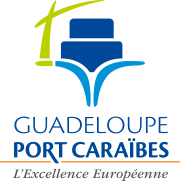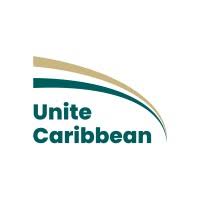MAGHIC PROJECT
The MAGHIC (Maritime Green H2 Infrastructure in the Eastern Caribbeans) project aims to study the implementation of a new energy chain based on green hydrogen coupled with a port infrastructure for unloading, storage and distribution. This green hydrogen is locally produced from offshore wind by energy ships and transported by sea to the Eastern Caribbean.
The project studied the conditions for the emergence and acceleration of the green hydrogen market in the Caribbean, determined the needs and associated outlets and estimated the production capacities needs. The integration of hydrogen into port infrastructures in the Caribbean arc have been considered from a technical and regulatory point of view.
The project culminated in an event dedicated to green hydrogen in the Eastern Caribbean, organised the 7th of 2023 in Guadeloupe.

Project partners
FARWIND Energy is the project leader and is accompanied by SARA Antilles-Guyane, the Lucian company UNITE Caribbean and the key port authorities of the Eastern Caribbean arc: Grand Port Maritime de la Guadeloupe and Grand Port Maritime de la Martinique.





Project Achievements
Significant achievements have been made:
- Generally speaking, the project has enabled the implementation of methods and tools adapted to the Caribbean (Market study, Wind resource, Routing, Ship and H2 offshore and onshore technologies, LCOH, Socio-economic study, etc.)
- A market study for Guadeloupe, Martinique and Saint Lucia, estimating the need for H2 up to 2050. A growing need for H2 from 2030 onwards was quantified, mainly driven by heavy onshore mobility, maritime mobility, support for the power grid, etc. This input data has enabled us to size the fleet of Energy Ships to meet all or part of this need, depending on the market share that can be captured by this production technology.
- A socio-economic study to assess the potential spin-offs for Martinique and Guadeloupe.
- A characterization of the wind in the Caribbean Sea on a MARFRET ship on routes from Martinique to Saint-Martin via Guadeloupe, which confirms the production estimates for energy ships, using LIDAR technology to continuously characterize the wind column up to 200 m high. These characterizations also enable us to accurately characterize the impact of the ship’s freeboard on the boundary layer, and to adapt the aerodynamic conditions of the Flettner rotors (the ship’s sails) to the conditions of integration on ships in the Caribbean Sea.
- Technical studies (electrical, fluidic, thermal, mechanical, logistical, etc.) for the integration of H2 production and storage facilities on board a FARWIND Energy Vessel, studies of the transfer of H2 from the vessel to the port on the harbor right-of-way, then transfer to onshore storage for distribution of the H2 on the island. These studies have made it possible to define the initial costs for the entire value chain – production, transport, transfer and onshore storage of green H2 produced with Energy Ships in the Caribbean Sea. Technological obstacles have also been identified, which will help to guide future work.
- It is possible to unload the hydrogen produced and transported on energy ships in Caribbean ports, particularly in Guadeloupe, Martinique and Saint Lucia. It has been shown that certain unloading solutions do not require heavy new infrastructures for the ports, but adaptations to the hazard studies specific to hydrogen. This unloading is compatible with an acceptable cost of hydrogen (equivalent to diesel at around €1.85/l), and provides a decarbonized, abundant, rapidly deployable energy source, ensuring energy autonomy, respecting historical uses, capable of adapting to the growth of the hydrogen market, and producing significant socio-economic spin-offs for the territories served.
- Hydrogen in its gaseous form would appear to be the most appropriate in view of the uses identified on land, the risks involved and from a technical and economic point of view.
- A study of the technical and regulatory feasibility of H2 infrastructures for logistics and onshore storage near the Guadeloupe port area. The studies show that safety aspects are very important to take into account well upstream of a future deployment project, because in the specific case of the Port of JARRY, for example, this new activity will require a revision of the PPRT (Plan de Prévention des Risques Technologiques – Technological Risk Prevention Plan), which necessitates a lengthy regulatory process (risk studies, public inquiry, etc.).
- Our territories already have all the assets to be pioneers on this issue (the infrastructures exist or are adaptable), the human resources are there, including among our students, as shown by the current and future involvement of the University at our side on this issue.
MAGHIC PROJECT WEBINAR
Main insights of the MAGHIC project, green hydrogen potential in the Caribbean islands
Thursday 7 December 2023 Pointe-à-Pitre, Guadeloupe & online
Conference agenda
- Insights from political decison-makers, hydrogen industry experts, academics and investors
- Project sumary and outlook by et perspectives all project partners: Farwind Energy, Grand Port Maritime de la Guadeloupe, Grand Port Maritime de la Martinique, SARA, Unite Caribbean
Cocktail reception
